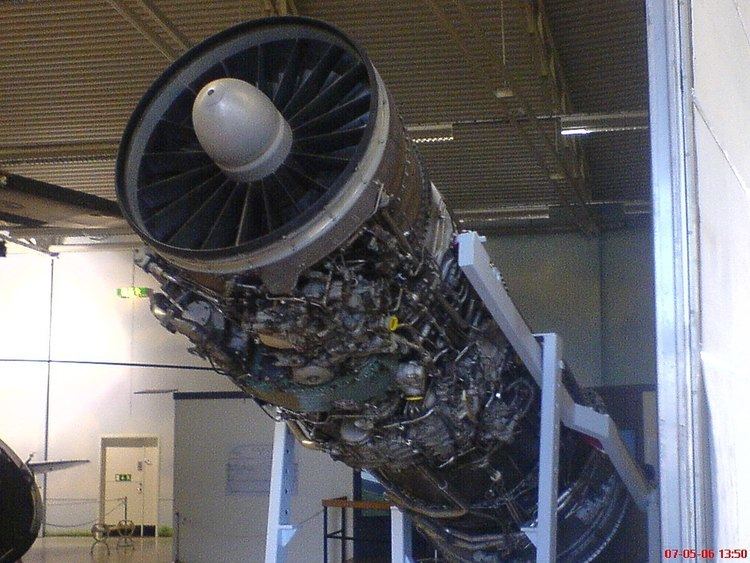 | ||
The Volvo RM8 is a low-bypass afterburning turbofan jet engine developed for the Saab 37 Viggen fighter. In 1962, the Pratt & Whitney JT8D-1 engine was chosen to power the Viggen in absence of a suitable and available engine designed for military use. Basically a licensed-built version of the JT8D, heavily modified for supersonic speeds, with a Swedish-designed afterburner, the RM8 was produced by Svenska Flygmotor (later known as Volvo Aero).
Contents
Variants and applications
Since the original engine was constructed for subsonic speeds, most part of the engine had to be redimensioned for the higher Mach-speeds in a military aircraft. Fans and turbine were altered, a new burn-chamber designed and a totally new fuel-control system for both engine and afterburner.
The flight envelope for the fighter-version demanded both more power and better compressor stall margins. This led to a new fan-stage (the so-called "0-stage") was introduced, making the engine longer. This led to a total redesign of the fans, the low-pressure compressor and the burn-chambers.
Specifications (RM8B)
Data from Flight International.
